This summer we've had a lot of farm visitors and we've sold quite a few alpaca. One of the questions we receive with each visit is which gender is better for pets and fiber animals - male vs. female? The answer, like everything else in life, is it depends.
Some alpaca buyers come with strong thoughts on the male vs. female debate and others are completely open to both genders. In the latter case, the buyers typically rely on us to help articulate their goals and then match them up to suitable alpacas.
Since we've been having this discussion so much this summer, I thought it would be good to explore this topic in a blog post.
Before we dive in, let's pause and talk about quality for a moment...
Show vs. Fiber vs. Pet Quality
As an alpaca breeder, it is my job to improve the quality of the alpacas on my farm and in the industry as a whole. This means we always want to "breed up", which is another way of saying we match alpacas together in an effort to improve quality. For example, if a female alpaca has a short staple length, you breed her to a male who has a much longer staple length. Or, if the female lacks fiber density, you breed her to a male with strong fiber density. This allows you to improve areas of poor performance, which in turn, improves the alpaca's overall quality and that of the industry as a whole.
My husband spends hours and hours going over alpaca genetics and trying his best to create the perfect match. He reviews the lineage of all of our alpacas and their possible mates. He reviews their EPD scores and histogram data so he knows their fiber data inside and out. He looks at crimp style and bundles. He looks at their offspring and their offspring. While he loves it, while I hate it.
Do you know why I hate it? There are days when I feel like alpaca breeding is like a gumball machine. You can think you're getting a purple gumball out, but white pops up instead. That analogy came from my friend Dave and I couldn't stop thinking about it because he was spot on. You can do your darndest to create the perfect alpaca pairing and it can fail. You can breed the same male/female combination five years in a row and you'll get different colors, different fiber quality, and even different looks each time.
This uncertainty and diversity deliver alpacas that are not "show quality" and they are downgraded to the classification of "fiber animal" or a "pet quality" alpaca. These lesser quality alpacas may not place in a show because they lack the ideal crimp, but they can still deliver oodles of superb fiber and they can make excellent companions and pets.
So yes friends, the alpaca industry doesn't get an A+ for creating show quality with every breeding. And that's okay because no other livestock industry can either. Nature is a fickle thing and pet quality alpacas do pop out, so we need to find loving hobby and family farms for them.
For the purpose of this article and discussion, I'm focusing on the usage of males and females in hobby and family farms.
Male Alpacas
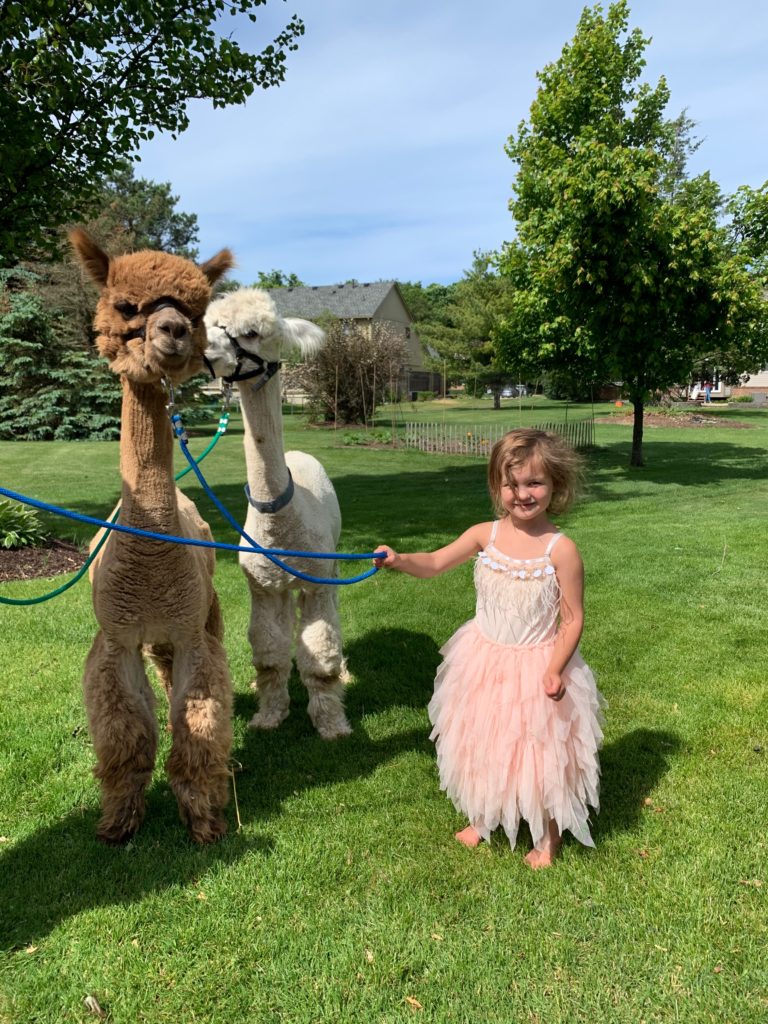
So now that we've gotten that out of the way, let's talk about boys vs. girls. Which gender is better for a hobby or family farm? Does gender really make a difference? It does, but this is based on your wants, needs, and goals.
Let's start with the boys.
When we first started our farm I was set on purchasing female alpacas. Sadly, my reasons were a bit jaded. The very first alpaca farm we visited skewed my view on boys. The farm owner was extremely fearful of creating Aberrant Male Syndrome, which is also referred to as Berserk Male Syndrome or Novice Handler Syndrome. Reality check! Berserk Male Syndrome is extremely rare in alpacas and it is generally created by humans. Male alpacas don't start out aggressive, humans create the behavior by mishandling them as crias.
Once I got past this initial bit of misinformation from my first farm visit, I realized male alpacas are awesome and they come with their own set of benefits.
On our farm, we now have almost 20 male alpacas, although not all of them are for sale. Romeo is 3, Captain America and Daredevil are 2, Levi and Teddy are 1, we have 9 young fiber boys about 9-12 months old, and then we have Rasmus and Oliver who are crias. We've had zero issues with aggressive behavior and I'll tell you that I truly love the boys. And our visitors love the boys too. They are fun, loving, and entertaining all wrapped up into one.
Romeo, Captain America, and Daredevil are all breeding age and they are all breeding. While they make it very clear they prefer time with female alpacas, they love us and they are eager to interact with us in a loving and respectful manner.
Teddy is the only problem child and his naughty moments are minor. He simply gets excited and lets you know he wants attention. And because he gets excited, he is a farm favorite with visitors. His mother Ariana and his cousin Adel (both female) have very similar personalities. Adel is another farm favorite and children always say she and Nibbler are their favorites when visiting. Teddy's full brother Rasmus will be very similar as he grows. I can see they share the same personality traits and I know they'll need the same feedback on their behavior.
Our boys romp around the paddock playing and roughhousing. At their current age, they play and they don't fight. And more importantly, there is no drama like you'd find with the females. We spend many nights watching from the house as the boys entertain us with their juvenile antics. I equate it to watching human boys in middle school. They play hard, while still being great friends. If there is a disagreement, it ends quickly and they move on.
Romeo, our oldest, is as chill as chill could be. He has no desire to play around with the younger boys and prefers to be cool, calm, and collected. He strolls up to me for a quick hello and then strolls back to continue eating or napping.
I know as this herd ages, they will change. We will need to remove their fighting teeth and we will need to have our non-herdsire boys gelded. That is part of the due care you give to alpacas, just like trimming their toes.
My mother-in-law (the human variety) always said boys were easier than girls and I'm starting to see this as my alpaca journey continues.
Another positive to boys is they come with fewer health concerns. Or so I've read on Facebook multiple times. In multiple discussions, I've seen seasoned alpaca owners state the male alpaca has less moving parts and fewer things to worry about since they are not carrying all the reproductive parts as a female holds. I've yet to prove this myself, however, it makes sense that this could be accurate.
Female Alpacas
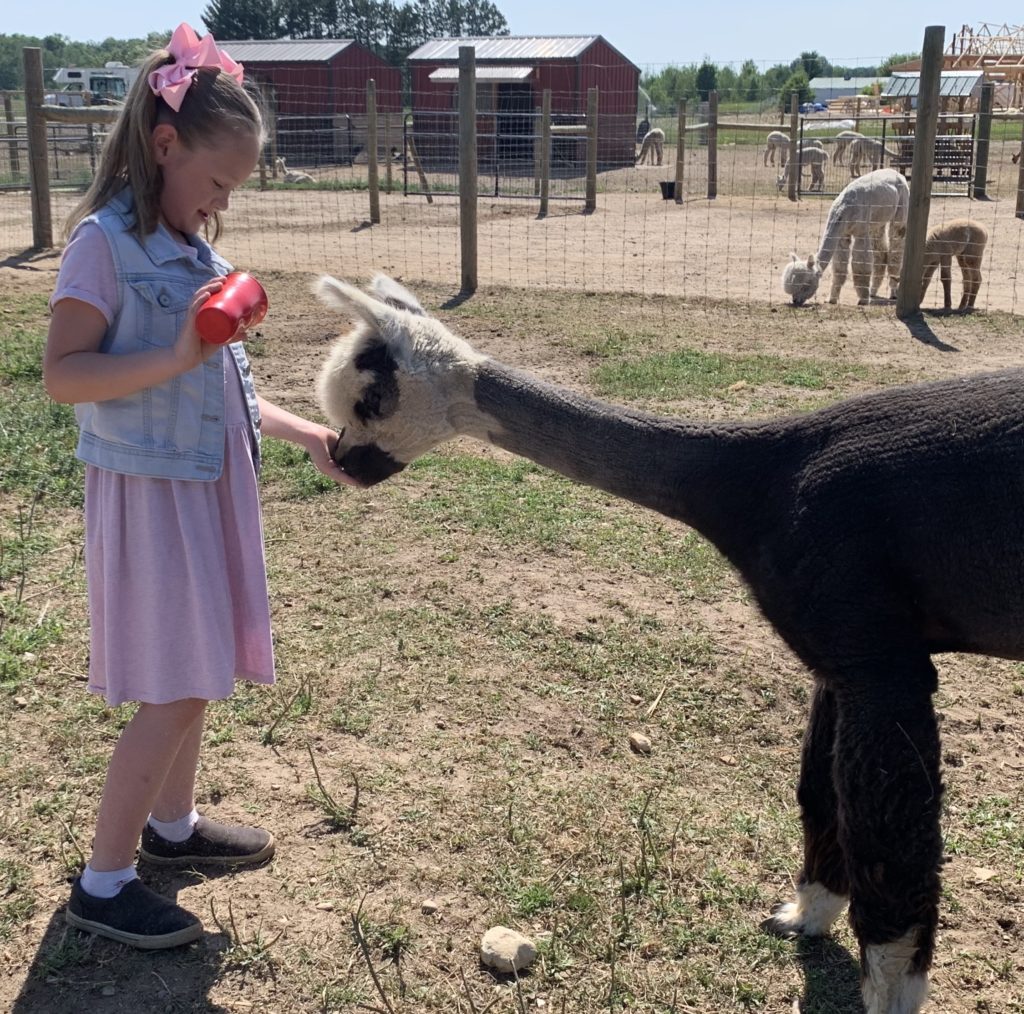
Our female alpaca herd is currently about 25-30 ladies and only a portion of those are for sale because many are foundation alpacas (aka breeders). We have them divided into two different paddocks so we can keep the younger gals away from the pregnant ladies. We do this more for ease of feeding than for controlling behavior.
Our young girls are sweet, silly, and get the "zoomies" where they run like crazy women or prance through the paddock in a parade-style gallop. Just like watching the boys play and laughing, we do the same when the zoomies appear. Watching Heartthrob, Onyx, and Nibbler prance around in a parade is just pure fun. The older girls in their paddock will also join, and soon enough, Stormy or Bubbles are prancing too. Everyone seems super happy and enjoying some silliness.
Unlike the boys who play fight, the girls will have full disagreements. They will argue, spit, and fight for dominance until one of them finally backs down and walks away with spit on their neck and head. It doesn't last long, but it does happen.
Faith, Vin, Reba, and Grace all despise the drama and they avoid it at all costs. They are all gentle souls who prefer to coexist in harmony. Dream Legend, Ariana, Attie, and Indie will stand their ground when needed. These days most fights occur between Dream Legen and Ariana because there is a constant fight for alpha status.
Does this drama make the boys better pets than the girls? Not at all. It just makes them different.
Alpacas are docile animals and aggression is generally not part of their personality. It's why I love them as much as I do and it's why they make great additions to hobby and family farms.
Males vs. Females
If you've stayed with me so far, you've probably realized I'm not going to tell you that one gender is superior to the other. I don't believe that is the case. You'll find alpaca owners in both camps. Some swear by male alpacas and others swear by female alpacas.
Choosing male vs. female alpacas requires you to think through the purpose of your purchase. If you'd like to multiply your alpaca herd, then female breeders are a great option. If you'd like to focus on fiber production, then a group of fiber males would be suitable.
On our farm, we want both breeders and fiber animals. I have about twenty girls that were purchased specifically for producing offspring, I have four male herdsires that were purchased for breeding, and I have nine young white males that were purchased solely for producing high quality, white fiber. I also have what I refer to as "PR alpacas" that are our farm greeters. They have the sole purpose of making people happy. Old Amber, Miracle, Trey, Indie, Attie, and Nibbler all fall into this group.
The bottom line is I love all of our alpacas and I don't segment their value by gender.
Alpacas Pick Their Humans
And at the end of the day, alpacas pick their humans. We've seen it time and time again.
Michelle and Dustin visited the farm last month and our beloved Bean decided Dustin was her new BFF. She wouldn't leave his side. And soon after Bean picked Dustin, Zula and Stormy did too. My farm favorites all decided that Dustin (the apparent alpaca whisperer) was who they wanted to spend time with moving forward. Bean is also my husband's favorite and Bean was not on our sales list. After we realized that Bean had selected Dustin, we caved and let Bean go to their family farm. Bean made her choice and we wanted to support it. That same day, Mae West did the exact same thing with Michelle. Mae West has been my girl since her arrival and she is always eager to give me daily kisses. Then Michelle arrived, Mae West fell in love with her and Michelle fell in love with Mae West.
At the end of the day, that is exactly what I want to happen. If I am offering pet quality alpacas to family farms, I want it to be a perfect fit. If it is, I know I've done my job well and I know the alpacas will live long and happy lives at their new homes.
Finding Your Perfect
If you are looking at raising alpacas for the first time, pick an alpaca breeder who will take the time to help you find your perfect match. This could be a female or male alpaca, it could be outgoing or reserved alpaca, or it could be just a rockstar breeder.
Go into the process with an open mind and an open heart. Visit farms, talk to alpaca farmers, and find a mentor that will help you get started and who will be there to support you along the way.
The right breeder will make sure your alpacas are a great fit for you, you're ready for their delivery, and you know how to care for them once they arrive. And the best mentor will offer to be there to help well after the sale has been made.
The Alpaca Handbook: Everything You Need to Raise Healthy and Happy Alpacas
If you've enjoyed this content, you'll love Rebecca's new book. The Alpaca Handbook is the essential guide to raising, breeding, and enjoying alpacas on the farm. The book is a great resource for alpaca owners who raise them for fun or profit. In this 17 chapter, 200+ page, full color book, you’ll learn everything you need to know to become a successful alpaca owner. Each chapter includes educational information, as well as stories that tie this information to real-world experiences.
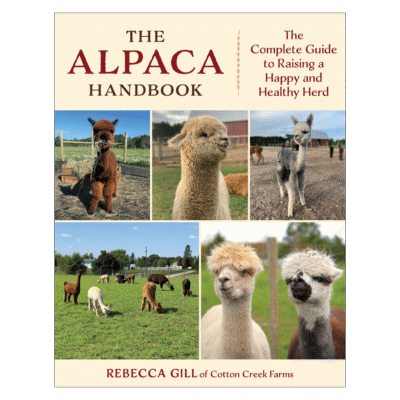

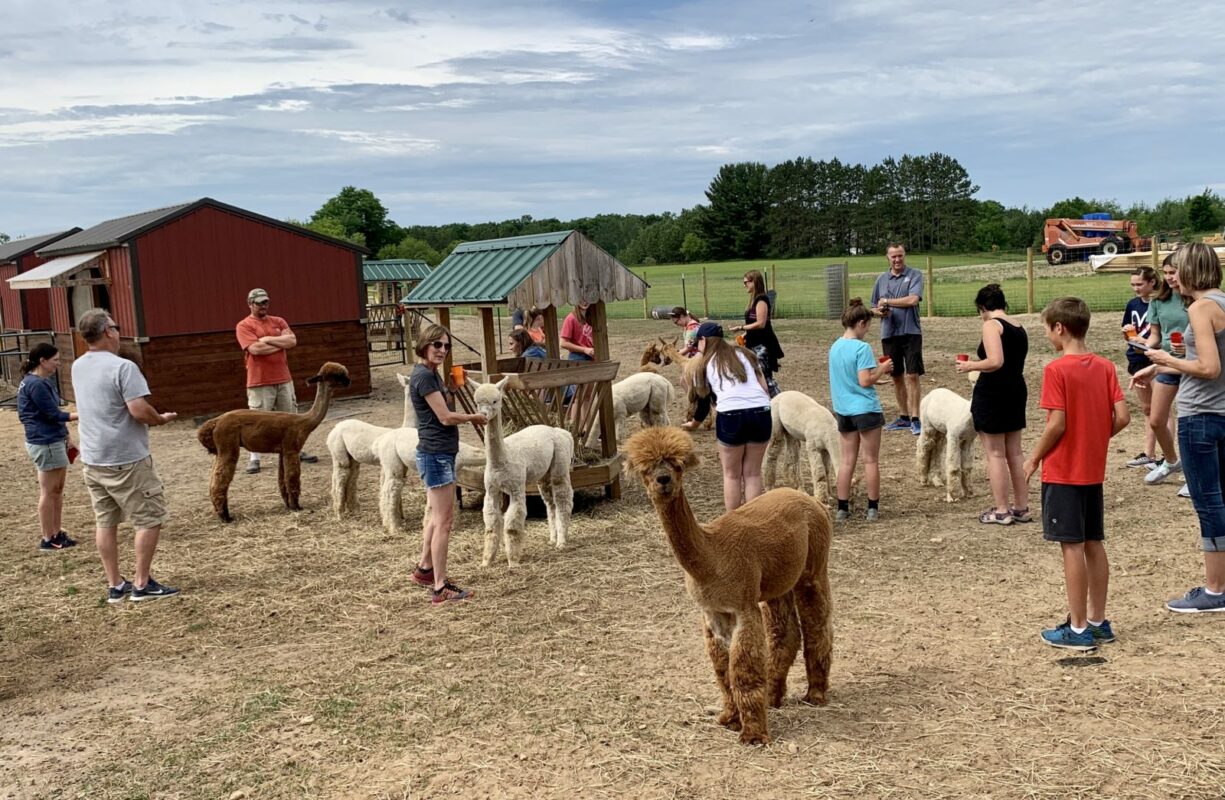


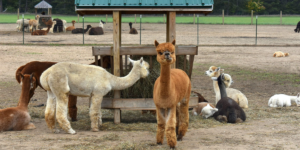
My wife and I and my son who 7 or considering getting 2 or 3 alpacas want to know if as of good farm in the area that has alpacas we could visit I live in Parkersburg West Virginia
Tom I don’t know any farms personally, however, you can go to alpacainfo.com/find/farms to search for alpaca farms by zip code.
As you look for your starter herd, remember you need at least 3 alpacas. Any less with compromise their mental and physical health. Alpacas are herd animals and they don’t do well in groups less than 3.
Can you keep 2 females and a male together if you only have 3? Or is this bad for the females?
You cannot house males and females together. The males will mount the females causing significant bodily harm, which can be so severe it can lead to death. Even gelded makes will do this, so all makes must be removed from females after six months of age. If you have both genders, you’ll need a minimum of three boys and three girls. They will require their own shelter and fenced-in area.
I’m interested in getting into raising them